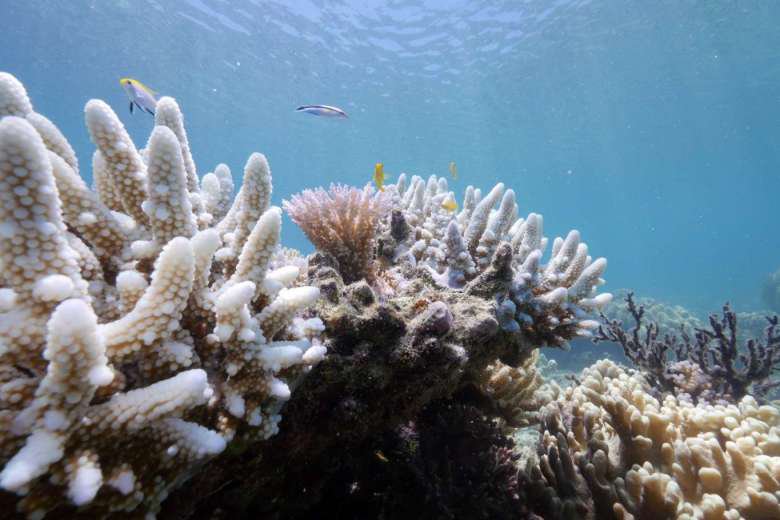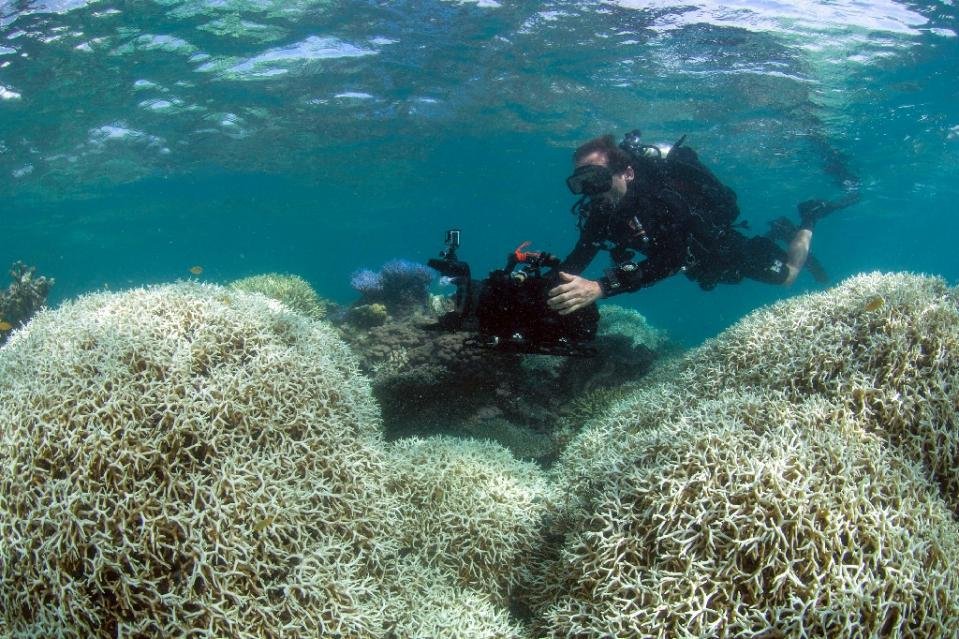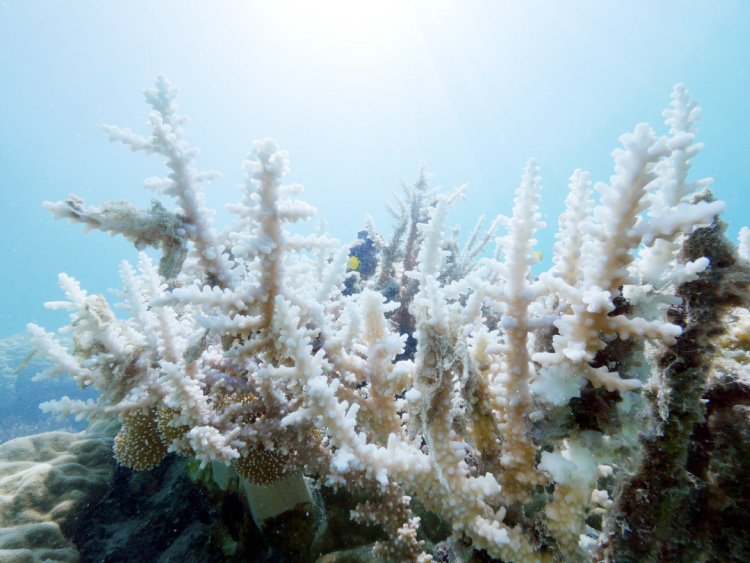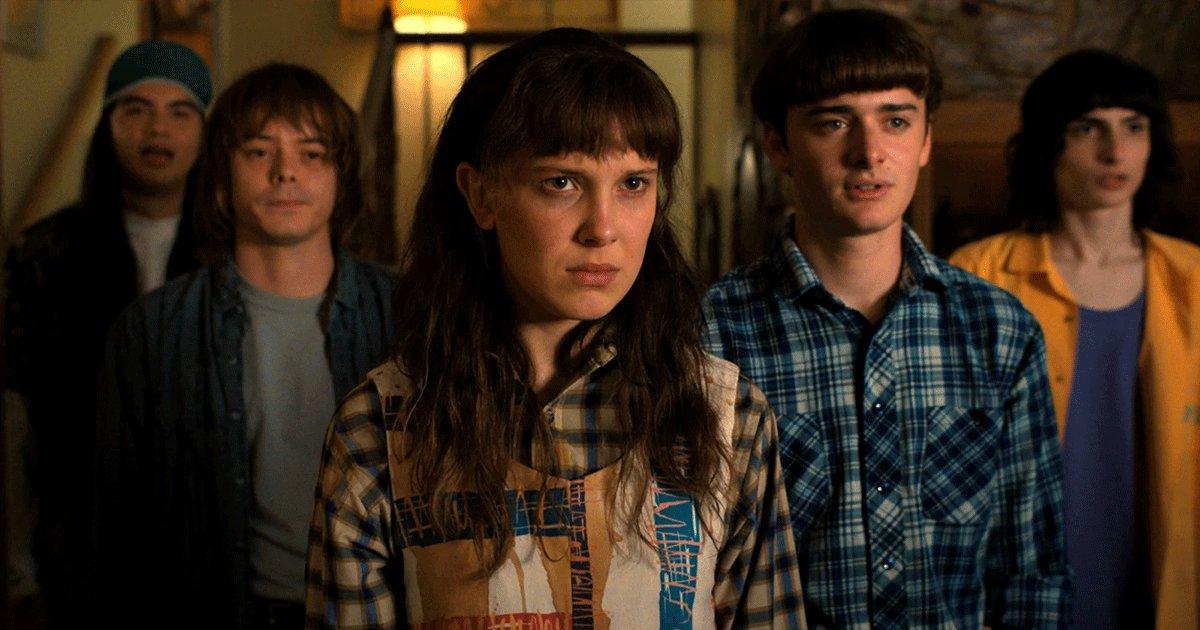Aerial surveys of Australia’s Great Barrier Reef have revealed the worst bleaching on record, scientists said Tuesday, with few corals escaping damage.
Researchers said the view was ‘devastating’ after surveying some 520 reefs via plane and helicopter between Cairns and the Torres Strait in the north of Queensland state.

Parts of Australia’s Great Barrier Reef face permanent destruction if the current El Nino, one of the strongest in two decades, does not ease this month, scientists said on Wednesday.
When does bleaching occur?
El Nino is a result of a warming of the ocean in the western Pacific — ideal conditions for coral bleaching, where coral expels living algae, causing it to calcify. Coral can only survive within a narrow band of ocean temperature.
Bleaching occurs when abnormal environmental conditions, such as warmer sea temperatures, cause corals to expel tiny photosynthetic algae, draining them of their colour.
Climate change – biggest threat to the Great Barrier Reef
The world’s biggest coral reef ecosystem — is under pressure from the threat of climate change, as well as farming run-off, development and the coral-eating crown-of-thorns starfish.

Conservationists blame the bleaching squarely on climate change.
“When you look at those stark, white photos, you’re looking at the face of climate change,” WWF-Australia spokesperson Nick Heath said.
The Great Barrier Reef may change forever!
“This will change the Great Barrier Reef forever,” Terry Hughes, an expert on coral reefs from James Cook University, told the Australian Broadcasting Corporation. “We’re seeing huge levels of bleaching in the northern thousand kilometre stretch of the Great Barrier Reef.”

Just over a week ago, the Australian government revealed bleaching at the World Heritage-listed site was “severe” but noted that the southern area had escaped the worst.
Hughes, convener of Australia’s National Coral Bleaching Taskforce, said, “The severity is much greater than in earlier bleaching events in 2002 or 1998.”
Why are the Great Barrier Reef so important to us?
The Great Barrier Reef stretches 2,000 km along Australia’s north-east coast and is the world’s largest living ecosystem.
– It brings in billions of dollars a year in tourism revenue.
– It is one of the world’s most important natural assets.
– provide habitats and shelter for many marine organisms,
– the fishing industry largely depends on coral reefs
– source of nitrogen and other essential nutrients for marine food chains
– it assists in carbon and nitrogen fixing
– help with nutrient recycling.
With inputs from Agencies


































